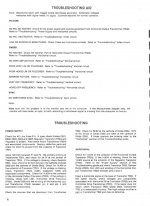mmruzek
Experienced Member
Hi,
Well, the last of my three IBM 5151 monitors has bit the dust. My last one served me well for many years... it's held together with duct tape after being hit by a fork lift by the previous owner. I'm working on a new project called the XT-Retro and would like to get one of these monitors back into a functional state. However, I don't really like working on monitors because of the high voltage, etc. I'd appreciate a few ideas for simple things to check. For example, are there any fuses inside? Any other simple checks? Thanks!
Michael
Well, the last of my three IBM 5151 monitors has bit the dust. My last one served me well for many years... it's held together with duct tape after being hit by a fork lift by the previous owner. I'm working on a new project called the XT-Retro and would like to get one of these monitors back into a functional state. However, I don't really like working on monitors because of the high voltage, etc. I'd appreciate a few ideas for simple things to check. For example, are there any fuses inside? Any other simple checks? Thanks!
Michael

